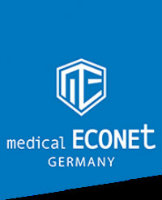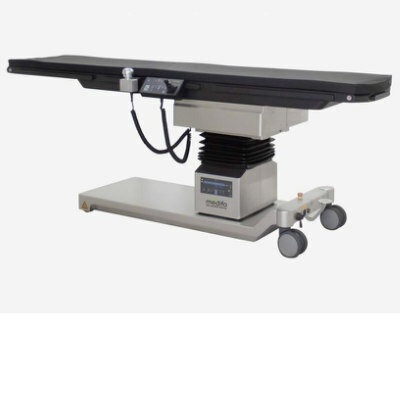IBM Collaborative to Bring Imaging into Daily Clinical Practice
|
By MedImaging International staff writers Posted on 07 Jul 2016 |

Image: The IBM Watson supercomputer (Photo courtesy of IBM).
IBM (Armonk, NY, USA) has announced a new global Watson Health medical imaging collaborative that includes more than 15 leading health systems, academic medical centers, ambulatory radiology providers, and imaging technology companies.
The new collaborative aims to bring cognitive imaging into daily practice to help doctors address breast, lung, and other cancers; diabetes; eye health; brain disease; and heart disease and related conditions, such as stroke. The members of the imaging collaborative will use Watson to extract insights from unstructured imaging data and combine it with a broad variety of data from other sources, such as data from electronic health records (EHRs), radiology and pathology reports, lab results, doctors’ progress notes, medical journals, clinical care guidelines, and published outcomes studies.
Members of the collaborative will team with Watson Health cognitive computing experts to train Watson on cardiovascular disease (CVD), eye health, and other conditions using the data provided by the members of the collaborative or from population-based disease registries, which house millions of de-identified cases from around the world. Watson could then identify CVD and other conditions early and spot frequently overlooked heart conditions, such as congestive heart failure (CHF). IBM envisions Watson learning how patients' hearts are likely to start failing, and then monitoring the progression of the disease.
“With the ability to draw insights from massive volumes of integrated structured and unstructured data sources, cognitive computing could transform how clinicians diagnose, treat and monitor patients,” said Anne Le Grand, vice president of imaging at Watson Health. “Through IBM's medical imaging collaborative, Watson may create opportunities for clinicians to extract greater insights and value from imaging data while better managing costs.”
In addition to better preventive and personalized care, the collaborative could help health systems and companies save billions on inefficient and uncoordinated care. A recent National Academy of Medicine (Washington, DC, USA) study concluded that between 35% and half of the more than USD three trillion the United States spends on healthcare each year is wasted on suboptimal business processes and inefficient, inadequate, unnecessary, and uncoordinated care. By sharing and improving the use of imaging data, IBM hopes the collaborative will reduce waste and improve the quality of care.
Related Links:
IBM
National Academy of Medicine
The new collaborative aims to bring cognitive imaging into daily practice to help doctors address breast, lung, and other cancers; diabetes; eye health; brain disease; and heart disease and related conditions, such as stroke. The members of the imaging collaborative will use Watson to extract insights from unstructured imaging data and combine it with a broad variety of data from other sources, such as data from electronic health records (EHRs), radiology and pathology reports, lab results, doctors’ progress notes, medical journals, clinical care guidelines, and published outcomes studies.
Members of the collaborative will team with Watson Health cognitive computing experts to train Watson on cardiovascular disease (CVD), eye health, and other conditions using the data provided by the members of the collaborative or from population-based disease registries, which house millions of de-identified cases from around the world. Watson could then identify CVD and other conditions early and spot frequently overlooked heart conditions, such as congestive heart failure (CHF). IBM envisions Watson learning how patients' hearts are likely to start failing, and then monitoring the progression of the disease.
“With the ability to draw insights from massive volumes of integrated structured and unstructured data sources, cognitive computing could transform how clinicians diagnose, treat and monitor patients,” said Anne Le Grand, vice president of imaging at Watson Health. “Through IBM's medical imaging collaborative, Watson may create opportunities for clinicians to extract greater insights and value from imaging data while better managing costs.”
In addition to better preventive and personalized care, the collaborative could help health systems and companies save billions on inefficient and uncoordinated care. A recent National Academy of Medicine (Washington, DC, USA) study concluded that between 35% and half of the more than USD three trillion the United States spends on healthcare each year is wasted on suboptimal business processes and inefficient, inadequate, unnecessary, and uncoordinated care. By sharing and improving the use of imaging data, IBM hopes the collaborative will reduce waste and improve the quality of care.
Related Links:
IBM
National Academy of Medicine
Latest Imaging IT News
- New Google Cloud Medical Imaging Suite Makes Imaging Healthcare Data More Accessible
- Global AI in Medical Diagnostics Market to Be Driven by Demand for Image Recognition in Radiology
- AI-Based Mammography Triage Software Helps Dramatically Improve Interpretation Process
- Artificial Intelligence (AI) Program Accurately Predicts Lung Cancer Risk from CT Images
- Image Management Platform Streamlines Treatment Plans
- AI-Based Technology for Ultrasound Image Analysis Receives FDA Approval
- AI Technology for Detecting Breast Cancer Receives CE Mark Approval
- Digital Pathology Software Improves Workflow Efficiency
- Patient-Centric Portal Facilitates Direct Imaging Access
- New Workstation Supports Customer-Driven Imaging Workflow
Channels
MRI
view channel
PET/MRI Improves Diagnostic Accuracy for Prostate Cancer Patients
The Prostate Imaging Reporting and Data System (PI-RADS) is a five-point scale to assess potential prostate cancer in MR images. PI-RADS category 3 which offers an unclear suggestion of clinically significant... Read more
Next Generation MR-Guided Focused Ultrasound Ushers In Future of Incisionless Neurosurgery
Essential tremor, often called familial, idiopathic, or benign tremor, leads to uncontrollable shaking that significantly affects a person’s life. When traditional medications do not alleviate symptoms,... Read more
Two-Part MRI Scan Detects Prostate Cancer More Quickly without Compromising Diagnostic Quality
Prostate cancer ranks as the most prevalent cancer among men. Over the last decade, the introduction of MRI scans has significantly transformed the diagnosis process, marking the most substantial advancement... Read moreUltrasound
view channel
Deep Learning Advances Super-Resolution Ultrasound Imaging
Ultrasound localization microscopy (ULM) is an advanced imaging technique that offers high-resolution visualization of microvascular structures. It employs microbubbles, FDA-approved contrast agents, injected... Read more
Novel Ultrasound-Launched Targeted Nanoparticle Eliminates Biofilm and Bacterial Infection
Biofilms, formed by bacteria aggregating into dense communities for protection against harsh environmental conditions, are a significant contributor to various infectious diseases. Biofilms frequently... Read moreNuclear Medicine
view channel
New SPECT/CT Technique Could Change Imaging Practices and Increase Patient Access
The development of lead-212 (212Pb)-PSMA–based targeted alpha therapy (TAT) is garnering significant interest in treating patients with metastatic castration-resistant prostate cancer. The imaging of 212Pb,... Read moreNew Radiotheranostic System Detects and Treats Ovarian Cancer Noninvasively
Ovarian cancer is the most lethal gynecological cancer, with less than a 30% five-year survival rate for those diagnosed in late stages. Despite surgery and platinum-based chemotherapy being the standard... Read more
AI System Automatically and Reliably Detects Cardiac Amyloidosis Using Scintigraphy Imaging
Cardiac amyloidosis, a condition characterized by the buildup of abnormal protein deposits (amyloids) in the heart muscle, severely affects heart function and can lead to heart failure or death without... Read moreGeneral/Advanced Imaging
view channel
New AI Method Captures Uncertainty in Medical Images
In the field of biomedicine, segmentation is the process of annotating pixels from an important structure in medical images, such as organs or cells. Artificial Intelligence (AI) models are utilized to... Read more.jpg)
CT Coronary Angiography Reduces Need for Invasive Tests to Diagnose Coronary Artery Disease
Coronary artery disease (CAD), one of the leading causes of death worldwide, involves the narrowing of coronary arteries due to atherosclerosis, resulting in insufficient blood flow to the heart muscle.... Read more
Novel Blood Test Could Reduce Need for PET Imaging of Patients with Alzheimer’s
Alzheimer's disease (AD), a condition marked by cognitive decline and the presence of beta-amyloid (Aβ) plaques and neurofibrillary tangles in the brain, poses diagnostic challenges. Amyloid positron emission... Read more.jpg)
CT-Based Deep Learning Algorithm Accurately Differentiates Benign From Malignant Vertebral Fractures
The rise in the aging population is expected to result in a corresponding increase in the prevalence of vertebral fractures which can cause back pain or neurologic compromise, leading to impaired function... Read moreImaging IT
view channel
New Google Cloud Medical Imaging Suite Makes Imaging Healthcare Data More Accessible
Medical imaging is a critical tool used to diagnose patients, and there are billions of medical images scanned globally each year. Imaging data accounts for about 90% of all healthcare data1 and, until... Read more
Global AI in Medical Diagnostics Market to Be Driven by Demand for Image Recognition in Radiology
The global artificial intelligence (AI) in medical diagnostics market is expanding with early disease detection being one of its key applications and image recognition becoming a compelling consumer proposition... Read moreIndustry News
view channel
Bayer and Google Partner on New AI Product for Radiologists
Medical imaging data comprises around 90% of all healthcare data, and it is a highly complex and rich clinical data modality and serves as a vital tool for diagnosing patients. Each year, billions of medical... Read more



















